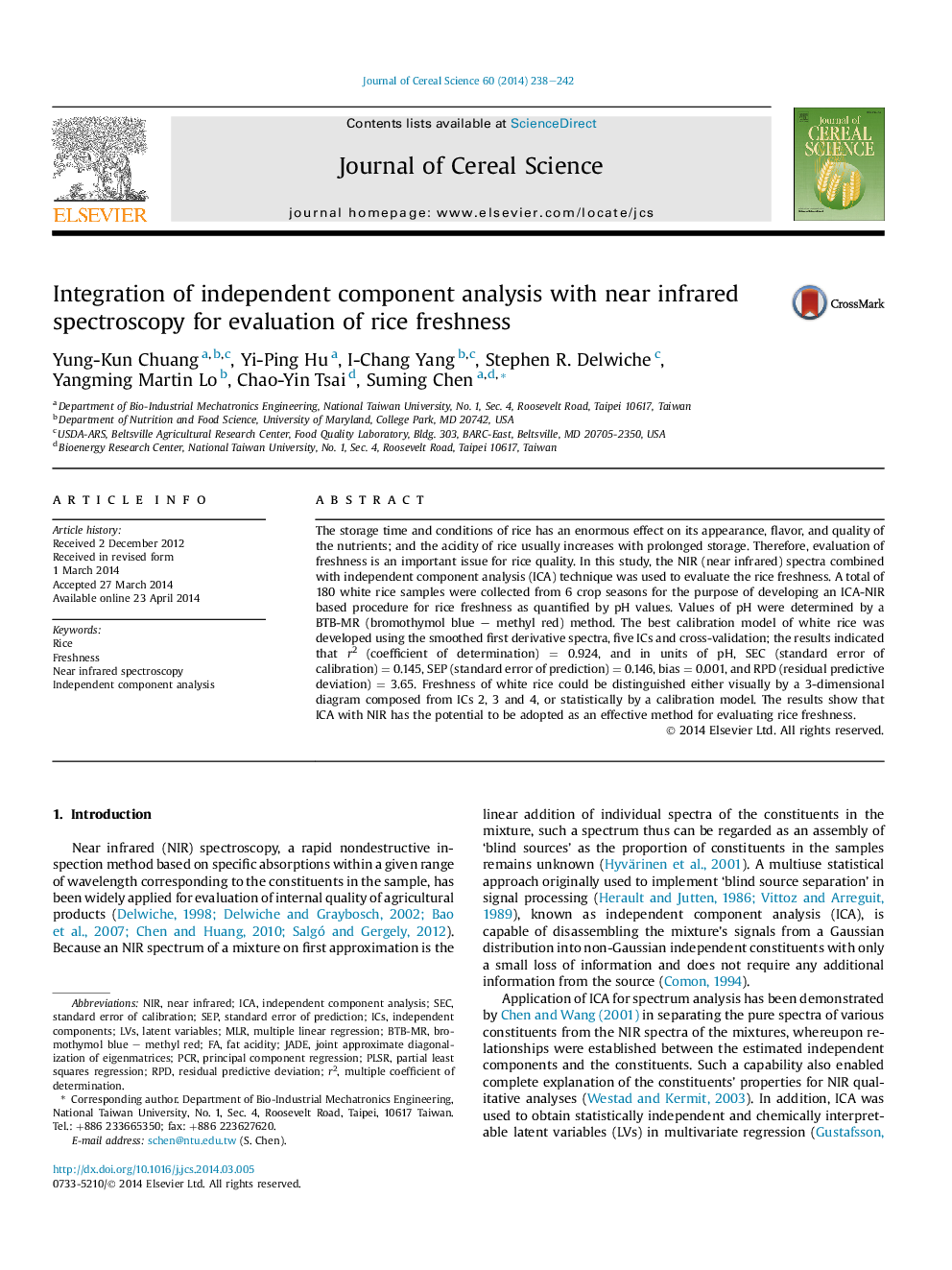| Article ID | Journal | Published Year | Pages | File Type |
|---|---|---|---|---|
| 4515811 | Journal of Cereal Science | 2014 | 5 Pages |
•Independent component analysis (ICA) is used for evaluation of rice freshness.•A relationship between pH value and fat acidity was established.•Rice freshness can be distinguished by a 3-dimensional diagram composed from 3 ICs.•ICA achieved good results in predicting pH value by its calibration model.
The storage time and conditions of rice has an enormous effect on its appearance, flavor, and quality of the nutrients; and the acidity of rice usually increases with prolonged storage. Therefore, evaluation of freshness is an important issue for rice quality. In this study, the NIR (near infrared) spectra combined with independent component analysis (ICA) technique was used to evaluate the rice freshness. A total of 180 white rice samples were collected from 6 crop seasons for the purpose of developing an ICA-NIR based procedure for rice freshness as quantified by pH values. Values of pH were determined by a BTB-MR (bromothymol blue – methyl red) method. The best calibration model of white rice was developed using the smoothed first derivative spectra, five ICs and cross-validation; the results indicated that r2 (coefficient of determination) = 0.924, and in units of pH, SEC (standard error of calibration) = 0.145, SEP (standard error of prediction) = 0.146, bias = 0.001, and RPD (residual predictive deviation) = 3.65. Freshness of white rice could be distinguished either visually by a 3-dimensional diagram composed from ICs 2, 3 and 4, or statistically by a calibration model. The results show that ICA with NIR has the potential to be adopted as an effective method for evaluating rice freshness.
